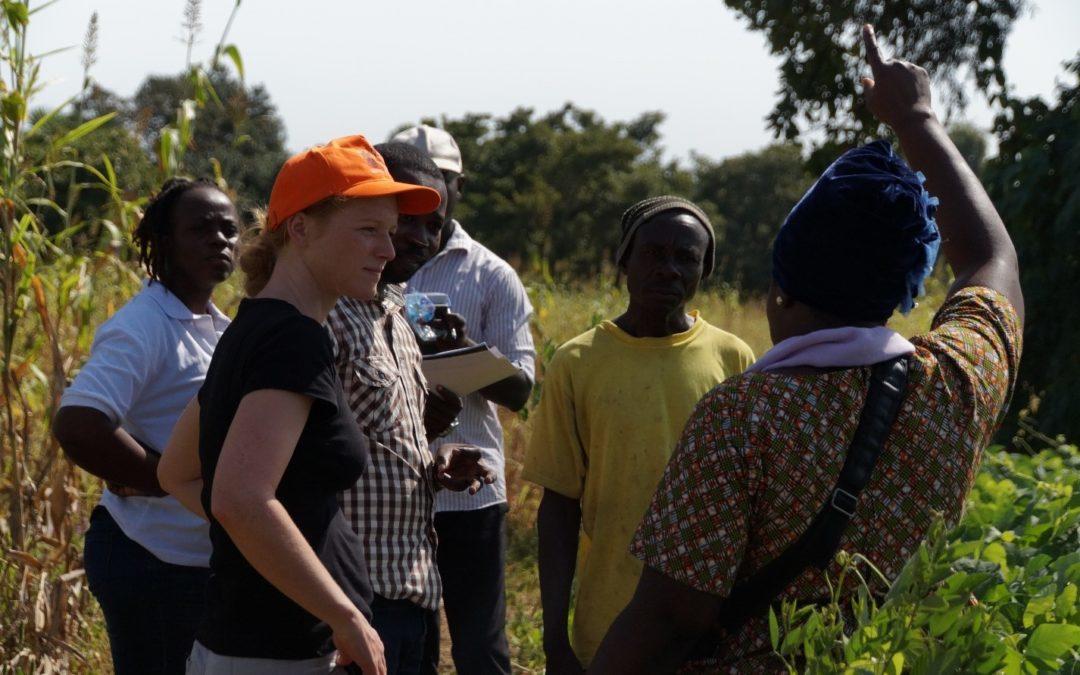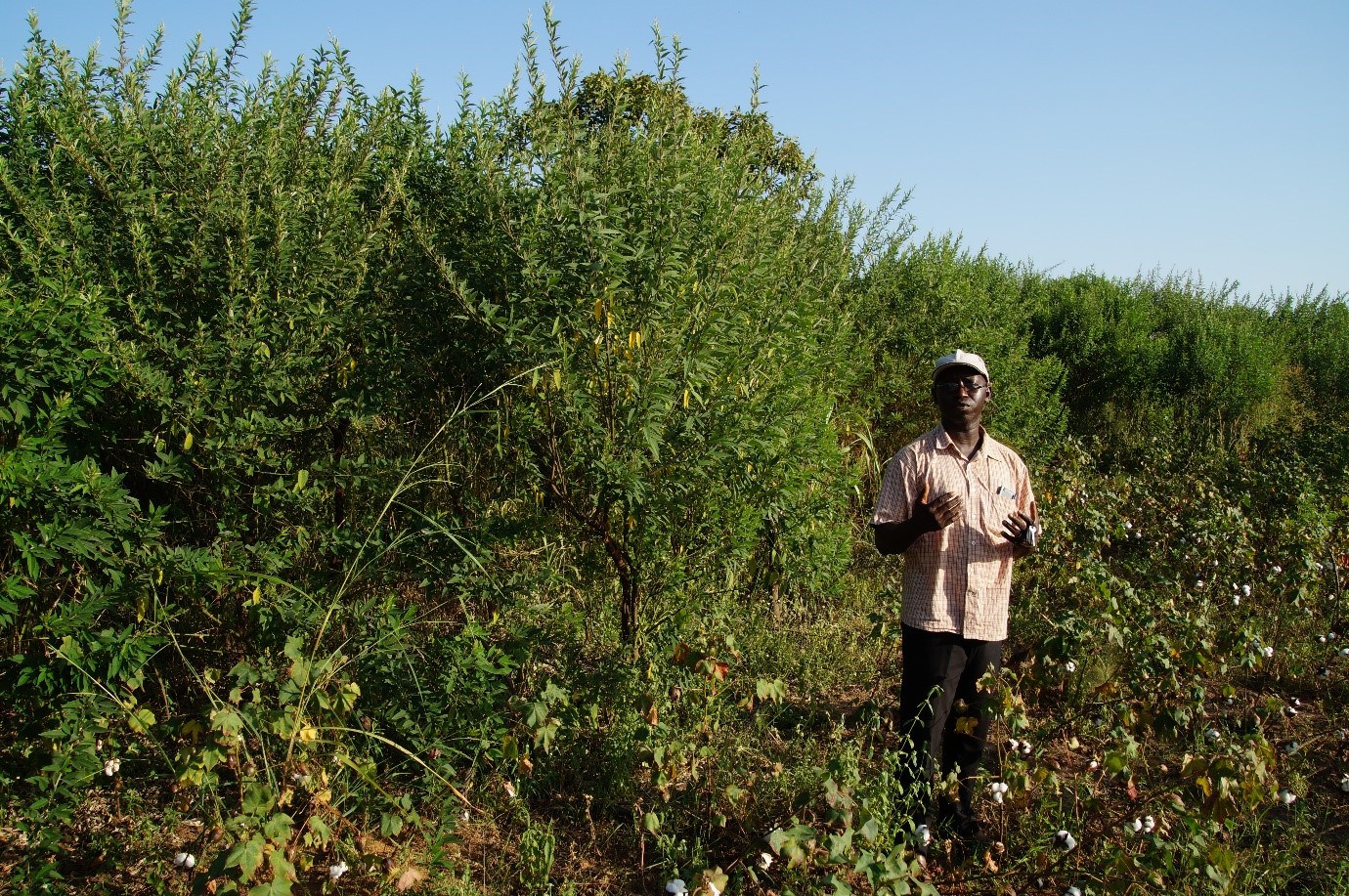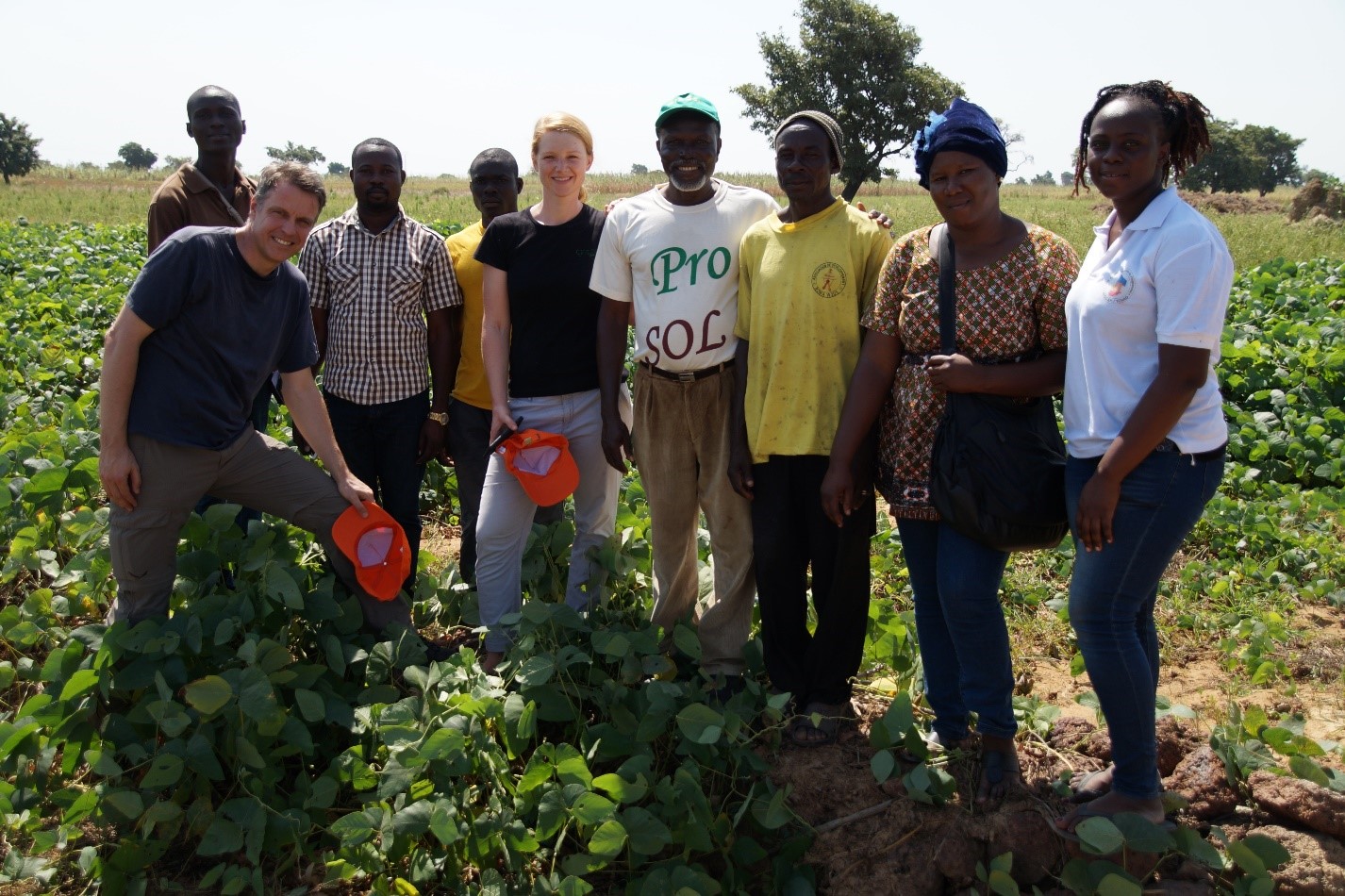“Green manure” cover crops – why they deserve a second chance

What goes around comes around! Green manure cover crops – or GMCCs, as we affectionately call them – have some history. The idea to grow plants that protect the soil and improve its fertility dates back some two to three decades at least, if not centuries.
Authors: Rolf Sommer and Birthe Paul
GMCCs provide shading (hence the ‘cover’ in the name) and therewith prevent the top of the soil from overheating and drying out, or being easily washed away by heavy rains. In addition, GMCCs serve as a source of organic matter (‘green manure’) when incorporated into the soil. Especially in tropical soils, repeated addition of organic matter in the form of compost or real (brown!) manure, is crucial to maintain the soil’s fertility, something that applying mineral fertilizer alone cannot maintain.
Most GMCCs are legumes, which possess the ability to absorb nitrogen directly out of the atmosphere, and therefore do not need nitrogen fertilizer – on the contrary, they add nitrogen gratis to the fields where they are grown.
GMCCs can also help with recycling and preventing nutrients from being leached out of the soil (“catch crop”) in temperate regions during winter, or, more generally speaking, during periods of the year when the main crop has been harvested and the land would otherwise lie bare.
Growing GMCCs can even help break crop pest and disease cycles (“break crops”), which can build up in agricultural monocropping systems. And, some species nurture insect biodiversity, for example, by providing nectar for bees.
So, all good? Not yet…
In spite of decades of research and numerous attempts to introduce GMCCs into farmers’ fields, GMCCs never made it mainstream in Africa. Some reasons for this keep coming back.
Unavailability of seeds is the number one reason farmers do not adopt GMCCs. How could they? They simply cannot get the seeds easily when they need them. Or, if seeds are available, prices are prohibitively high. Also, there is not enough easy-to-understand documentation that would allow farmers to educate themselves on which GMCC to grow, how, when and where (and where to source the seeds).
Lack of good knowledge can have some unpleasant consequences. Some GMCCs, such as Mucuna pruriens (velvet bean, see photograph), grow quite vigorously and can suppress the main crop if planted too early. Other GMCCs, like Desmodium (a Fabaceae), are not that easy to establish, and management requires some experience.
An ‘ocean’ of a Mucuna pruriens GMCC field
Desmodium (green broad-leaf plants) planted together with Brachiaria grass; establishment of a good groundcover with Desmodium can be a problem.
Many of the GMCCs, like Mucuna, Desmodium, Canavalia, Lablab, Stylosanthes, and Aeschynomene are tasty to livestock. In areas where livestock movement is not restrained, especially in the dry season where many GMCCs continue to cover the soil, farmers risk losing all invested effort to somebody else’s freely roaming animals.
Farmers are busy folks. Time is usually a scarce good, and any extra crop added – GMCCs included – means more work. If GMCCs require a lot of attention in peak labor times, they will not rank high on farmers’ to do.
In view of the investments (time to plant and manage, money to buy seeds) needed to grow GMCCs, smallholder farmers in the past did not appreciate GMCCs that didn’t provide an additional benefit other than “only” soil fertility. Dual- or even triple-purpose crops, such as pigeon pea (see photograph), are usually more popular amongst farmers than crops that provide only soil fertility benefits.
Dr. Jonas Doussa (INRAB, Benin) next to 1-year-old pigeon pea field
Many GMCCs, like (flowering) Mucuna pruriens, are dual-purpose: they provide green manure, and their seeds can also be harvested and consumed (Mucuna requires some processing first)
All of this combined – can’t buy the seeds, don’t know how to manage the plants, have no time for this, can’t eat it or feed it to my animals! – made GMCCs rather unpopular in the past.
So, what has changed and why do GMCCs deserve a second chance?
The severity of soil degradation and the associated loss of productivity have worsened over the years. With soils steadily being degraded, many farmers are now starting to recognize that business-as-usual farming risks failure. Yields are no longer what they used to be, and mineral fertilizer alone does not do the trick anymore. Farmers, more than ever, see the urgency to invest in practices that increase soil fertility.
The impact of climate change has become tangible. Weather has become quite unpredictable; rains come late, and then too little or too much at once. Protecting soils from erosion, assuring that rainwater infiltrates rather than runs off, and that soils maintain the capacity to store water are becoming crucial thins for farmers to consider if they are to cope with climate change. GMCCs provide such a service. If dual-purpose, they also help diversify and reduce risk.
Political will and related tangible action and impact on the ground are on the rise. For some years now already, soils have been back on the international agenda. For example, the program on Soil Protection and Rehabilitation for Food Security is endorsed by the German Federal Ministry for Economic Cooperation and Development (BMZ) and implemented by GIZ and partners in six countries. The UN’s Sustainable Development Goal 15 (Life on Land), and in particular Goal 15.3 – combat desertification, restore degraded land and soil – is another example of the world recognizing the issue of soil degradation and investing significant resources to turn the tide.
Dr. Firmin Amadji (Sol Consult Africa, left) and Professor Rodrigue Diogo (University of Parakou, Benin, right) discussing the individual advantages of various Brachiaria grass species as livestock feed.
Finally, governments, scientists and development organizations have learned a lesson or two over the past decades. Nowadays, the majority of projects that address sustainable intensification of agriculture are carried out in a participatory manner rather than acting top-down. Initiatives recognize the importance of embracing the complexity of agricultural systems, and their dependency on healthy environments and healthy soils. They also deal with the importance of tradeoffs and constraints that had kept farmers from picking up more sustainable ways of cropping their lands.
What goes around comes around. And hopefully this time around GMCCs are here to stay.
Farmers and a team of scientists from CIAT and GIZ ProSol in a Mucuna field near Kandi in northern Benin.






